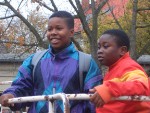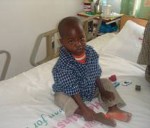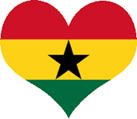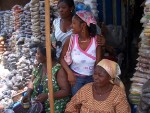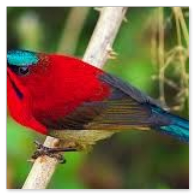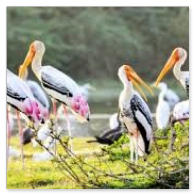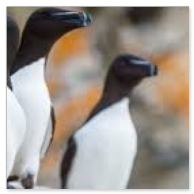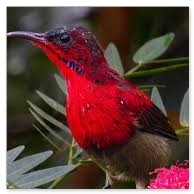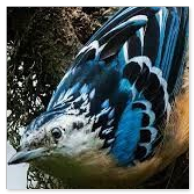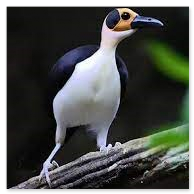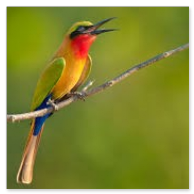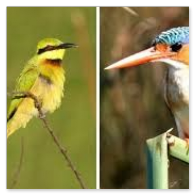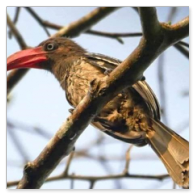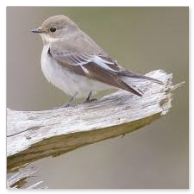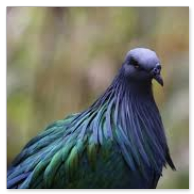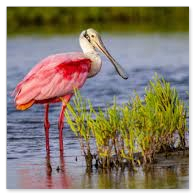Welcome to GHANA (Akwaaba)
Ghana was formerly a British colony known as the Gold Coast from 1844, was led to independence by Dr. Kwame Nkrumah on the 6th of March, 1957. Ghana became the first black nation in sub-saharan Africa to achieve independence from colonial rule. The first president of Ghana, Osagyefo Dr. Kwame Nkrumah, graduated from Lincoln University, USA and returned to Ghana to make it the first African country to gain independence. On 1st July,1960 Ghana became a republic with Kwame Nkrumah as its first President.
President of Ghana 2016 -2024: His Excellency Nana Dankwa Akufo-Addo
Ghana's struggle towards democratization has gained a stronger ground with the success of its 1996 multiparty elections. Today Ghana is a welcome African example of legitimate democracy and successful economic reform. In an unusually peaceful transfer of power, a civilian government that grew out of a military regime has accepted an election defeat and surrendered power to the opposition
People talk about a newly relaxed atmosphere here. The military presence has steadily decreased in the past ten years. There's less fear of criticizing the government. Tourists and their dollars are welcome. Ghanaians are well known for their friendliness.
The quest for transparent and effective elections stirred the efforts of political parties, nongovernmental organizations and donors, all of whom had immensely contributed to the electoral process. The road towards democracy in Ghana has not been an easy task, and the struggle continues as the nation furthers its efforts of instituting more political, social and economic reforms.
The quest for transparent and effective elections stirred the efforts of political parties, nongovernmental organizations and donors, all of whom had immensely contributed to the electoral process. The road towards democracy in Ghana has not been an easy task, and the struggle continues as the nation furthers its efforts of instituting more political, social and economic reforms.
 Ghana plays a constructive role as a stabilizing influence in Africa and is committed to helping resolve regional conflicts and promoting regional security. Ghana has taken a lead role in supporting the African Crisis Response Initiative, and is also in the forefront of African countries that have made positive steps toward consolidating democracy. The United States has a strong commitment to encourage these positive efforts and supports the development of African leadership in promoting economic growth and political stability. Many donors are involved in promoting democracy and good governance objectives in Ghana. The United Kingdom, Denmark, Germany, and Netherlands as well as the European Union and World Bank have active programs in supporting decentralization of government services to local level district assemblies. Germany also has an active media and journalism support program.
Ghana plays a constructive role as a stabilizing influence in Africa and is committed to helping resolve regional conflicts and promoting regional security. Ghana has taken a lead role in supporting the African Crisis Response Initiative, and is also in the forefront of African countries that have made positive steps toward consolidating democracy. The United States has a strong commitment to encourage these positive efforts and supports the development of African leadership in promoting economic growth and political stability. Many donors are involved in promoting democracy and good governance objectives in Ghana. The United Kingdom, Denmark, Germany, and Netherlands as well as the European Union and World Bank have active programs in supporting decentralization of government services to local level district assemblies. Germany also has an active media and journalism support program.In close cooperation with the World Bank and the International Monetary Fund, Ghana emerged as a model for free market innovations in Africa, and now spends five times as much on education and health as on its military.
Geography
Ghana is located in west Africa with the Atlantic Ocean to the south, Togo to the east, Cote d’Ivoire to the west and Burkina Faso to the North, about 450 km north of the equator between latitudes 4 and 11.5º North and longitudes 3.11º West and 1.11º East. Ghana lies within the tropics and on the Greenwich Meridian.
Surface Area/Population: Ghana has a land area of 239.460 sq. km (92,100 sq. miles) with a population of 33.3 million (2023).
Population growth rate, 2.17% (2017 est.)
In 2050 the population will increase by est.
52 million.
See the map of Ghana and Africa map.
See the map of Ghana and Africa map.
Capital: Greater Accra with a population of 3.6 million
Currency: Ghanaian Cedis.
11.9 Ghanaian Cedis (GHS)= 1$ (USD)
12.6 Ghanaian Cedis (GHS)= 1€ (Euro
National Independence Day: March, 6th (1957)
Republic Day: 1 July
Official Language: English
Republic Day: 1 July
Official Language: English
Region Ashanti- Greater Accra- Brong-Ahafo- Northern- Western- | Capital Kumasi Accra Sunyani Tamale Sekondi-Takoradi | Region Central- Eastern- Upper East- Upper West- Volta | Capital Cape Coast Koforidua Bolgatanga Wa Ho |
Tropical, warm and comparatively dry along the southeast cost; hot and humid in southwest; warm and dry in the north. The temperatures vary with season and elevation. Except in the north two rainy seasons occur, from April to July and from September to November. The average high annual temperature is about 26oC and the average low is 21oC (21oC - 35oC). In most areas the highest temperatures occur in March, the lowest in August.
Accra: average daily temperature is 30o C (86F).
Ghana is rich in agricultural resources, timber, gold and other valuable minerals, abundant with educated skilled and enterprising people, blessed with a stable form of goverrnment and dedicated to the principles of free enterprise, has long been seen as one of Africas most promising countries. A stable political environment, with established democratic institutions and systems to ensure good governance.
The main exports –



cocoa, Gold from Obuasi, bauxite, diamonds, timber and manganese
known as traditional items, are now increasingly supplemented by processed and semi-processed industrial and agricultural products with tourism as the third largest foreign currency earner after cocoa and gold.
Industries (Automobile)
Volkswagen and Nissan to establish new assembly plants.
Chinese truck manufacturers to establish assembly plant.
The official language is English. There are about six languages that are used on the national radio and television. These are: English, Akan (Fanti, Twi), Dagbani, Ewe, Ga, and Hausa. Even though English is the official language, it is only used in government and business circles in the cities and urban areas. Akan in its various dialects enjoys a wide usage throughout the country. It is a trade language for most Ghanaians. About nine languages are used in the Ghanaian school system. Most Ghanaians speak one other Ghanaian language or more languages in addition to their own. There are about 60 language groups in Ghana.
For several years now Ghana has been playing host to an ever-increasing number of visitors, especially tourists from all over the world. Ghanaians are a hospitable, respectable and peace-loving people. One could tell from their greeting forms and general behavior. Ghanaians have wide and generous smiles when you greet them. Traditionally, children are taught in their homes to respect their elders. A child who fails to observe social value is considered as untrained and uncultured. Visitors from all over the world are sure to be well received in any Ghanaian community that they happen to visit. In all Ghanaian communities, a visitor is first given a seat, and then water to drink before he is greeted and asked the purpose of his visit. The smile on their face seems to be permanently in place and the world have observed that Ghanaians are very patient as people, kind not only to visitors but to themselves too.
hospitable, respectable and peace-loving people. One could tell from their greeting forms and general behavior. Ghanaians have wide and generous smiles when you greet them. Traditionally, children are taught in their homes to respect their elders. A child who fails to observe social value is considered as untrained and uncultured. Visitors from all over the world are sure to be well received in any Ghanaian community that they happen to visit. In all Ghanaian communities, a visitor is first given a seat, and then water to drink before he is greeted and asked the purpose of his visit. The smile on their face seems to be permanently in place and the world have observed that Ghanaians are very patient as people, kind not only to visitors but to themselves too.
 hospitable, respectable and peace-loving people. One could tell from their greeting forms and general behavior. Ghanaians have wide and generous smiles when you greet them. Traditionally, children are taught in their homes to respect their elders. A child who fails to observe social value is considered as untrained and uncultured. Visitors from all over the world are sure to be well received in any Ghanaian community that they happen to visit. In all Ghanaian communities, a visitor is first given a seat, and then water to drink before he is greeted and asked the purpose of his visit. The smile on their face seems to be permanently in place and the world have observed that Ghanaians are very patient as people, kind not only to visitors but to themselves too.
hospitable, respectable and peace-loving people. One could tell from their greeting forms and general behavior. Ghanaians have wide and generous smiles when you greet them. Traditionally, children are taught in their homes to respect their elders. A child who fails to observe social value is considered as untrained and uncultured. Visitors from all over the world are sure to be well received in any Ghanaian community that they happen to visit. In all Ghanaian communities, a visitor is first given a seat, and then water to drink before he is greeted and asked the purpose of his visit. The smile on their face seems to be permanently in place and the world have observed that Ghanaians are very patient as people, kind not only to visitors but to themselves too. Women are highly respected. A woman is given a seat first before a man. However, if water is being offered, it is the man who drinks first. Hardly ever touching or kissing in public, for instance, Ghanaians may not be particularly demonstrative in love, but their feelings for their partners must not be mistaken. Their love is pure.
Ghanaians are well known for their wisdom which is expressed in their use of proverbs, especially at the courts of chiefs, and in bedtime stories and anecdotes.
The ancient African political systems were dominated by 'queenmothers'. Contrary to some anthropologist's assertion that the office of the queenmother was merely ceremonial, female title-holders of the Akan and the other tribes in the Republic of Ghana enjoyed significant political powers. The Akan ohemmaa obtains her title due to seniority in the royal matrilineage.
The ancient African political systems were dominated by 'queenmothers'. Contrary to some anthropologist's assertion that the office of the queenmother was merely ceremonial, female title-holders of the Akan and the other tribes in the Republic of Ghana enjoyed significant political powers. The Akan ohemmaa obtains her title due to seniority in the royal matrilineage.
Fertility rate of Ghana fell gradually from 4.04 children per woman in 2015 to 3.93 children per woman in 2017. Birth rate is 30.5 births/1,000 population (2017 est.).In traditional communities in Ghana, every child is a treasured element of the society irrespective of how it was conceived. Once it had been born, it is an accepted commodity, and the Ghanaian in his right senses with his feet firmly fixed in his traditions will do all it takes to see that the child grows in happiness.
Being young or old, the Ghanaian belongs to a large family. Family in Ghana, goes beyond spouse and children. There are parents, siblings, uncles, cousins, aunts, grand-parents and great grand-relations. Behind every Ghanaian, there is the extended family which is a source of strength and assurance.
Being young or old, the Ghanaian belongs to a large family. Family in Ghana, goes beyond spouse and children. There are parents, siblings, uncles, cousins, aunts, grand-parents and great grand-relations. Behind every Ghanaian, there is the extended family which is a source of strength and assurance.
Mutual social responsibility is a family Ghanaian culture. In times of difficulty, they all share the cost of relief and also share the times of joy together. United we stand.
Ghana strives to improve efficiency and enhance quality education delivery, fostering dialogue between researchers and policymakers.
The purpose of education is to replace an empty mind with an open one." - Malcolm Forbes
The educational system was reviewed and revised in Sept. 2007. The Government of Ghana is in the process of finalizing the new Education Strategic Plan (ESP) 2018-2030, guided by the Government’s desire to create an inclusive education system through improved access and equity, and provision of quality and relevant educational opportunities for all.
This latest ESP 2018-2030 is the sixth plan in the series and it builds on the previous ones and on other strategic goals such as Free Compulsory Universal Basic Education, and MDGs and is aligned to the more recent Sustainable Development Goal (SDG) 4 and the National Development Plan 2016-2057. The ultimate goal of the plan is to ensure that education plays a critical and positive role in the national development agenda and in helping to integrate international development goals into this agenda.
The Ghana Education Evidence Summit brought together policymakers, researchers and practitioners to: a) share evidence that has been collected about education in Ghana; b) identify ways in which evidence can be used for better decision-making; and c) develop a research agenda to fill the gaps in the existing evidence.
 Ghana has 18 530 primary schools, 8 850 junior secondary schools, 900 senior secondary schools, 41 training colleges, 12 Polytechnics
Ghana has 18 530 primary schools, 8 850 junior secondary schools, 900 senior secondary schools, 41 training colleges, 12 Polytechnics URL: http://www.ghanaweb.com/GhanaHomePage/education/ Size: 11 Kb
Students during a computer class at Gbimsi Junior High School, Savelugu, Northern Region of Ghana
76,6 (%) 2015 (2010:71,5%, 2000:57,9%)
Average annual rate of 15.30 % Adult (15+) literacy rate (%)
Literacy, youths*: 90.6%, female youths: 52.9%, female adults: 62.5%
*Youth literacy rate is the percentage of people ages 15-24 who can both read and write with understanding a short simple statement about their everyday life.
There are 66 Universities in Ghana. The University of Ghana at Legon is the first University of the nation. It is located on a park - like campus in Legon about 12km from the centre of Accra the capital. Due to its excellent reputation it attracts foreign students especially students from the U.S.
The other 3 Universities are the Kwame Nkrumah University of Science and Technology, Kumasi, University of Cape Coast, Cape Coast and University of Development Studies, Tamale.
http://www.ghanaweb.com/GhanaHomePage/education/universities.html Size: 11 Kb
http://www.ghanaweb.com/GhanaHomePage/education/universities.html Size: 11 Kb
The four universities below have faculties for Medicine and Health Sciences.
University of Ghana, Legon, Accra,
Kwame Nkrumah University of Science & Technology, Kumasi
University of Cape Coast, Cape Coast
University of Development Studies, Tamale
Ghana has a reasonably good health service. All the 10 regional capitals have referral hospitals and most districts have clinics and hospitals. There are three teaching regional hospitals in Accra, Greater Accra, Cape Coast, Central Region and Kumasi, Ashanti Region have facilities for treating special cases.

Doctor to population ratio: 1: 8,481 (2018) in 2013 it was 1: 9.749
Nurse to population ratio: 1: 627 (2017)
Midwife to population ration: 1: 907 (2017)
Additionally, a number of religious organizations and private medical practitioners operate hospitals and clinics all over the country. Herbal medicine and psychic healing are also generally practiced, and there is a special government Herbal Medicine Hospital and Research Centre at Akwapim-Mampong.
Four universities below have faculties for Medicine and Health Sciences for training medical and nursing students.
1. University of Ghana, Legon, Accra,
2. Kwame Nkrumah University of Science & Technology, Kumasi.
It has some links in form of interinstitutional development cooperation with German Institutions.
3. University of Cape Coast, Cape Coast.
The Regional hospital at Cape Coast is a teaching hospital. Professor Yankah is developing clinical partnership program with the Cape Coast Teaching Hospital (CCTH. Prof. Yankah’s Intercor-PASCaTS team in collaboration with the German Heart Centre Berlin has completed a research program on “prevalence of rheumatic heart disease (RHD) in Ghana” among 4763 school children and adolescents in the Central and Eastern Regions of Ghana. A training centre for heart ultrasound diagnostics (echocardiography) is in developmental phase in collaboration with heart centres in Berlin and Erlangen and a private paediatric cardiology clinic in Berlin, Germany.
4. University of Development Studies, Tamale
Ghana is one of the first African countries to have an incipient humanist movement. Like most African nations, Ghana was formerly under European colonial rule, but it was not widely settled by Europeans because of its inhospitable climate.
The northern part of the country has long been Muslim, but Christians, who arrived in the 18th century, now outnumber Muslims two to one. Fortunately, Ghana is free of the tribal conflicts which afflict many other African countries. It is one of the most economically progressive African countries and could be the starting point for the humanist movement in Africa.
The country still practices English common law and customary law. Ghana has not accepted compulsory International Court of Justice (ICJ) jurisdiction.
Most festivals in Ghana are for purification, thanksgiving, dedication and reunion. They are also considered symbolically as maintaining the link between the living and the dead. It is dedicated to the honor of the spirits of the ancestors believed to be a guiding force in all human activities. Some of the most popular festivals are:
Adae and Akwasidae: Celebrated by the people of Ashanti.Akwambo: Celebrated by the Fantes of Agona and Gomoa.Odwira: An Akan festival celebrated by the Ashantis and Akuapim.Homowo: Celebrated by the Ga people of Accra.Hogbetsotso: Celebrated by the Ewe people of Anlo.Damba: Celebrated by the poeple of the Northern and Upper Regions of Ghana.Bugum: Celebrated by the Dagombas of the Northern Region.Kwafie: Celebrated by the Dormaa in the Brong Ahafo Region.Aboakyere: Effutu people of Winneba.Oguaa Fetu Afahye: Celebrated by the people of Cape Coast.
Studies show that when women are supported and empowered, all of society benefits. Their families are healthier, more children go to school, agricultural productivity improves and incomes increase. In short, communities become more resilient.
The major objectives of the Women’s Empowerment Program (WEP) in Ghana include fostering an environment that empowers women to take up strategic positions in society and decision-making bodies as well as empowering them as advocates for human rights and gender-based and development issues within their communities.
The Hunger Project-Ghana works towards these goals by building the capacity of selected rural women and men, or community animators, in human and children’s rights, the Domestic Violence Act, the Intestate Succession Law, Wills Act, the Marriage Law, sexual and reproductive rights, family planning, leadership and credit management to empower them to provide paralegal services to their communities and achieve economic self-reliance.
Through The Hunger Project-Ghana’s programs, not only have many women become more confident in their abilities to create positive change, but more and more men are noticing women’s capabilities and necessary role in the development of their communities. Parents are realizing the need to free the girl child of loaded household chores, which impede her educational and economic development, and are now splitting chores evenly between girl and boy children.
Dressing in Ghana traditionally reflects the geo-political division of the country into north and south. Kente is the most popular cloth for festive occasions. Cloth  is commonly worn by men from the south and the smock which is becoming a gown for all occasions are common among men from the north. Ghana's kente cloth has spread in popularity around the world. The kente identifies where a person is from, and sometimes, their station in life. The first president of Ghana, Osagyefo Dr. Kwame Nkrumah used both the smock and the kente cloth widely to portray Ghana's culture in the area of clothing. The kente cloth and the smock can be purchased at any commercial market in the urban areas where they are sold by numerous merchants.
is commonly worn by men from the south and the smock which is becoming a gown for all occasions are common among men from the north. Ghana's kente cloth has spread in popularity around the world. The kente identifies where a person is from, and sometimes, their station in life. The first president of Ghana, Osagyefo Dr. Kwame Nkrumah used both the smock and the kente cloth widely to portray Ghana's culture in the area of clothing. The kente cloth and the smock can be purchased at any commercial market in the urban areas where they are sold by numerous merchants.
 is commonly worn by men from the south and the smock which is becoming a gown for all occasions are common among men from the north. Ghana's kente cloth has spread in popularity around the world. The kente identifies where a person is from, and sometimes, their station in life. The first president of Ghana, Osagyefo Dr. Kwame Nkrumah used both the smock and the kente cloth widely to portray Ghana's culture in the area of clothing. The kente cloth and the smock can be purchased at any commercial market in the urban areas where they are sold by numerous merchants.
is commonly worn by men from the south and the smock which is becoming a gown for all occasions are common among men from the north. Ghana's kente cloth has spread in popularity around the world. The kente identifies where a person is from, and sometimes, their station in life. The first president of Ghana, Osagyefo Dr. Kwame Nkrumah used both the smock and the kente cloth widely to portray Ghana's culture in the area of clothing. The kente cloth and the smock can be purchased at any commercial market in the urban areas where they are sold by numerous merchants.Adanwomase/Bonwire: Traditional Kente cloth weaving centres
Ghana's national kente cloth is an indigenous handicraft. It is a brilliantly colourful fabric and intricate design, entirely hand-woven by Ghanaian weavers.
Adanwomase is a town in Kwabre East District, about 17 miles northeast of Kumasi.
The history of Kente cloth: Among the Asante tales, a popular legend relates how one of two brothers — Watah Kraban and Kuragu Amoaya and his friend Kwaku Ameyaw from Bonwire in Ashanti amazed by the beauty of spider web when observing a spider weaving its web decided to create something similar art of weaving. One night, the two went out into the forest to check their traps, and they were amazed by a beautiful spider’s web whose many unique designs sparkled in the moonlight. The spider, named Ananse, offered to show the men how to weave such designs in exchange for a few favors. After completing the favors and learning how to weave the designs with a single thread, the men returned home to Bonwire, and their discovery was soon reported to Asantehene Opemsoɔ Osei Tutu, first ruler of the Asante kingdom. The Asantehene adopted their creation, named kente due to its resemblance to the local basket kenten, as a royal cloth reserved for special occasions, and Bonwire became the leading kente weaving center for the Asantehene and his court. There are many types of Kente each with its own symbolism and name, which tells the history, culture and social practice of the weavers of the cloth. As declared a national cloth on the attainment of independence on 6th March 1957, Kente is used for different purposes and at different functions. It is important to note that Kente is used not only for its beauty but also for its representational imperative.
https://www.modernghana.com/news/893343/harnessing-kente-heritage-for-economic-empowerment-in-bonwir.html
See Ghana & Wear Ghana http://dailyguideafrica.com/see-ghana-wear-ghana/




A traditional kente cloth weaver Bonwire kente dress Kente weavers of Bonwire
https://www.blastours.com/ghana-tours/ghana-slave-route-tour
From about the 15th to the 19th century about 80 European-style forts and castles were built along the coast during the colonial period, at the time known as Gold Coast, mostly by Portuguese, Dutch and British occasions in bloody battles or by treaty, and all have a fascinating history. Source: K.B.Dickson, 1969. There are also many smaller forts that may be visited as well. Some are in a state of ruin while others are maintained and provide basic tours.
The most visited destinations are the colonial fortresses at Cape Coast and Elmina, which were once major transshipment points for tens of thousands of slaves on their way to the new world. Cape Coast castle played a significant role in the gold and slave trades. But also, two significant contributions were made here: the arrival of christianity, and the establishment of the first formal education system through castle schools.
https://de.wikipedia.org/wiki/Fort_São_Jorge_da_Mina
https://en.wikipedia.org/wiki/Elmina_Castle
https://www.easytrackghana.com/tour-ghana_forts-castles.php
https://www.easytrackghana.com/tour-ghana_forts-castles.php


Cape Coast Castle Elmina Castle
FORT St. JAGO
FORT St. JAGO
Within walking distance to Elmina Castle, Fort St Jago originated as a chapel built between 1555 and 1558 by the Portuguese, which was later converted into a lodge and watch tower. From the vantage point of this nearby hill, the Dutch launched their successful land attack on Elmina Castle. Its primary purpose was to provide military protection to the Castle and to serve as a disciplinary institution for European convicts and malcontents.

Christiansborg Castle is located just off the shores of the vibrant township of Osu, in Ghana's capital Accra. They named it Christiansborg, meaning 'Christian's Fortress', after the King of Denmark, Christian IV, who passed away in 1648. A mutiny in 1679 resulted in the assassination of the fort's Danish commander. Christiansborg Castle is unique among the castles and forts as it served as Government House during various periods in the 19th and 20th centuries and continues to play that role today. The building of the first lodge in the 17th century at Ursu or Osu is attributed to the Swedish African Company. It became the residence of Ghana's first president, Kwame Nkrumah.

Fort William (not to be confused with Fort William in Cape Coast) is located in the beach village of Anomabu, just before reaching Cape Coast. The fort was originally built by the Dutch in 1640 and has a long and troubled history of capture and recapture by the Swedes, Danes, English, as well as attacks by the French and Ashanti's, and even occupation by local tribes during a time of abandonment. The present Fort William was built by the British, in 1753-56 and restored in 1954. In addition to the fort, the village of Anomabu boasts a lovely beach resort, a fishing beach, ancient village and numerous sacred shrines.
FORT St SEBASTIAN
FORT PRINSENSTEIN
FORT GROSS FREIDRICHSBURG
FORT SAN ANTONIO: Fort San Antonio in Axim has a history like many forts, beginning as a Portuguese trading post in 1502, and changing hands many times among English, European and local powers over a long history, until its final ownership by the British was established in 1872.
FORT APOLLONIA
Fort Apollonia is the westernmost fort in Ghana, located in Beyin. Visiting this fort is easy when making an excursion to the Nzulezu stilt village or the Ankasa Protected Area. The beach at Beyin is an especially beautiful beach that is worthy of a night of relaxation with the sound of the waves after your trip to Nzulezu or Ankasa.
FORT METAL CROSS Fort Metal Cross is a small fort about a 20 minute walk from Busua Beach. Built by the English in 1691-97, possibly on the site of an earlier post, this fort has the typical history of many occupiers and abandonment. The Dutch named it Metalen Kruis in 1868, and ceded it to Britain in 1872. This fort was extensively restored in 1954-56. Fort Gross Freidrichsburg in Prince's Town began as a Danish lodge in 1658, with the fort originally built in 1682 by the Brandenburg Africa Company, making this Ghana's only German fort. This fort was extensively restored in 1954-56
Aburi Botanical Gardens, Aburi

Bui National Park in Brong Ahafo, Brong Ahafo Region



Kakum National Park, in the neighbourhood of Cape Coast, Central Region
Kakum National Park, Central Region
Located about 25mins. drive from Cape-Coast, Two-three hours drive from Accra. Kakum is a virgin tropical rain forest with abundant of very tall trees, medicinal plants, birds and diverse insects and mammals. Kakum National Park covers an estimated area of about 357km square. Most trees have an average height of about 65m, making it ideal for it's suspended canopy walk.


Cannopy Walk
Mole-Nationalpark, Northern Region
Mole national park is the largest and most developed protected area in whole Ghana as safari spot , located in the West Gonja District and situated mainly in the Northern Region. Presently the 4577sqkm Park is state-owned and managed by the Wildlife Division.
Largest birds site
The largest national park in Ghana also has the largest bird checklist of any site in Ghana, with at least 300 species. The broad-leaved Guinea woodland attracts large communities of birds associated with the drier northern climate – January is the best time of the year to visit.
Tono Dam near Bolgatanga in the north of Ghana has large populations of water birds. Tour guides plan unique nocturnal excursions for sightings of rare birds here.
http://amedzofevillage.com/en/2016/04/21/mole-national-park-2/


Shai Hills, Greater Accra



Lake Bosomtwi
A crater lake near Kumasi believed to have been created by a fallen meteorite. The sacred lake is located in a crater and ringed by rugged mountains. This picturesque meteorite crater lake is surrounded by dozens of fishing and farming villages. The lake basin is ideal for mountaineering, diving, swimming, fishing, birding, etc.
Volta River
The Volta River is the main river system in the West African country of Ghana. It flows into Ghana from Bobo-Dioulasso highlands of Burkina Faso. The main parts of the river are the Black Volta, the White Volta, and the Red Volta. In the northwest, the Black Volta forms the international boundaries between the Ivory Coast, Ghana, and Burkina Faso. The Volta flows southward along Akwapim-Togoland highlands, and it empties into the Atlantic Ocean at the Gulf of Guinea at Ada. It has a smaller tributary river, the Oti, which enters Ghana from Togo in the east. The Volta River has been dammed at Akosombo for the purpose of generating hydroelectricity. The reservoir named Lake Volta stretches from Akosombo in the south to the northern part of the country, thus being one of the largest man-made reservoirs in the world.



The Black, White and Red Volta Adome bridge Lake Bosumtwi in Kumasi
King of the Ashanti Kingdom (Asantehene). Kumasi
Otumfuo Nana Opoku Ware II.


The seat and official residence of the Asantehene, the Monarch of the Ashanti
Kingdom is located Kumasi, the capital of Ashanti Region
More at Kumasi Cultural Centre
http://www.thekingdomofasante.com/centre-for-national-culture/

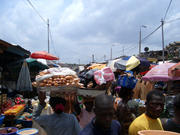
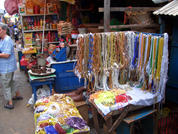
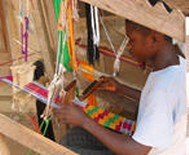
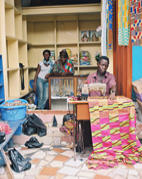


Traditional kente cloth weaver and tailor
Makola Market. It is the most famous open air market located at the Accra Central.
The market was recently constructed to replace the old one with the same name. One can obtain beautiful African Textiles, Foodstuffs, traditional Cloths and clothes, shoes, cosmetics, etc. It also houses a bank, restaurants, offices, etc. Because of its central location it enjoys a lot of patronage from residents of Accra and beyond.


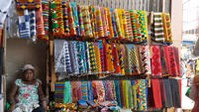
Beads shop Busy market Ghana made textile shop
https://www.youtube.com/watch?v=kcCKmYn0jM0
https://www.blastours.com/ghana-tours/ghana-bird-watching
Ghana is a bird watcher's paradise with approximately 800 of Africa's 1300 species of birds, a staggering figure considering Ghana occupies only 1.25% of Africa's total land mass.
The largest national park in Ghana also has the largest bird checklist of any site in Ghana, with at least 300 species. The broad-leaved Guinea woodland attracts large communities of birds associated with the drier northern climate – January is the best time of the year to visit.
Visitors can use the Sun Bird Trail here together with the canopy walkway, Kakum National Park to search for more than 400 bird species. The long-tailed hawk (Urotriorchis macrourus), the rarely seen Nkulengu rail (Himantornis haematopus), the Akun eagle owl (Bubo leucostictis), and the black spinetail (Telacanthura melanopygia), as well as globally threatened and near-threatened species can be found at Kakum.
Located near the coastal area of the Central Region of Ghana, Kakum National Park is a tropical rainforest with many unique species of fauna, flora and animal. These include the endangered Diana monkey, the yellow-backed duiker and the African elephant. Kakum is a chief attraction for the many visitors who annually flock to Ghana to see wildlife and wonders of nature. This park is home to many birds, such as the African grey parrot and hornbill. You should also try the Kakum canopy walkway, a 350m (1,150 feet)-high walkway which journeys through several connecting treetops.
Keta is the largest lagoon in Ghana. It is a Ramsar site and Ghana’s most important marine birding site, home to 76 waterbird species including globally significant numbers with an estimated total population of well over 100,000.
Canoe on the lagoon or use the Woe, Fiahor, Tegbi, Adina and Afiadenyigba bird watching lookouts. Find the Tringa erythropus and other species which occur in large numbers, including Calidris ferruginea, C. minuta, Himantopus himantopus, Dendrocygna viduata, and several heron and egret populations.
Over 90 different bird species reside in Xavi Bird Sanctuary near the Keta Lagoon. Canoes run down Lotor River to the Avu Lagoon for bird lovers throughout the year.
The violet curaco is approximately 48cm, and is often inconspicuous in the treetops |
At Atewa, you can find the green-tailed bristlebill (Bleda eximius), the red-cheeked wattle-eye (Dyaphorophyia blisetti), and the white-necked Picathartes (Picathartes gymnocephalus).
Atewa is an incredibly beautiful forest located on the way to Kumasi. The Atewa Forest Reserve is only one of two evergreen Upper Guinea Forest ecosystems remaining in Ghana. Recognized as a Globally Significant Biodiversity Area, this forest has an amazing number of butterflies and offers better bird watching than.
Tono Dam near Bolgatanga in the north of Ghana has large populations of water birds. Tour guides plan unique nocturnal excursions for sightings of rare birds here.
https://blastours.com/ghana-tours/private-shore-excursions
Visit to the Accra art centre, High Street, Accra, which offers a rich collection of artefacts.
Set off for the Eastern Region through the Akwapim mountains. Firstly, a visit to the Aburi Botanical Garden, which offers a rich collection of tropical flora. Not far from the gardens are craftsmen who use wood and leather to create art unique to Ghana. Also visit Agomanya, the bead market and the Cedi Bead factory. Wednesdays & Saturdays are market days in this area considered to be the centre of Krobo bead industry.
1. Kempinski Hotel Gold Coast City
2. Kwarleyz Residence
3. Mövenpick Ambassador Hotel
4. Accra Mariott Hotel
5. Labadi Beach Hotel
6. African Regent Hotel
7. Tang Palace Hotel
8. Number One Oxford Street & Suites
9. Villa Monticello Boutique Hotel
10. Alisa North Ridge
--------------------------------------------------------
11. Best Western Premier Accra Airport Hotel
12. Accra City Hotel
13. Fiesta Royal Hotel
14 Bel Air Crest
15. Accra Luxury Apartments @ The Gardens
16. Accra Luxury Appartments Tettey Quarshie Opposite Accra Mall
17. Oak Plaza Hotels East Airport
18. Accra Luxury Appartments Pearl 5th Circular Road
19. Ibis Sytyles Accra Airport
20. Appartment Saccra, Cantonments Embassy Gardens,
4th Circular Road
Anomabo Beach Resort. The Central Region is a top destination with tourists due to its historical involvement in the transatlantic slave trade.
Busua Paradiso Beach
Nyaniba Beach
La Palm Royal Beach, Accra: ?
Coconut Grove Beach Resort, Cape Coast:
Bojo Beach, Accra: https://www.youtube.com/watch?v=n-Iio5_y0VU
Ankobra Beach, Ankobra
Labadi Beach, Accra: Blue Diamond, One hour from Accra: https://www.youtube.com/watch?v=sRXA8QgmtJA
Pristine Beach Resort, One hour from Accra; https://www.youtube.com/watch?v=sRXA8QgmtJA
Lou Moon Lodge (5 hours from Accra): https://www.youtube.com/watch?v=sRXA8QgmtJA
Keta Beach Resort, Volta region
Beach Club Restaurants in Accra
Maya Cova Beach Club
Polo Beach Club, +233 25 623 7667
Sand Box Beach Club, 4th Otswe Street South, Accra. Phone:+233 27 781 8105
Labadi Beach hotel
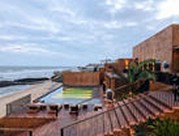
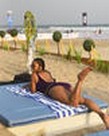
Maya Cova Sand Box Polo Beach
https://gosurfafrica.com/ghana/
Surf Spots
Western Region: Busua Beach, Black Mamba, Achenim
Accra Area: Gomoa Feteh, Kokrobite Beach

Olive Garden “Feinkost”, 5th Circular Road, Cantonments.
Phone: +233 55 925 2004
Azmera Restaurant (Ghanaian foods), Nr. 9 Arku Korsah Road Roman Ridge, Accra.
Phone: +233 300 996 332
Chez Clarisse, Oxford Street, Osu behind Ecobank, Accra
Mama Cuisine, Casely Hayford Road, Inside Alliance Francoise Accra.
The Ghanaian Village, La Palme Royal Beach Hotel, Accra
The Buka Restaurant. 10th Lane Osu, Accra




